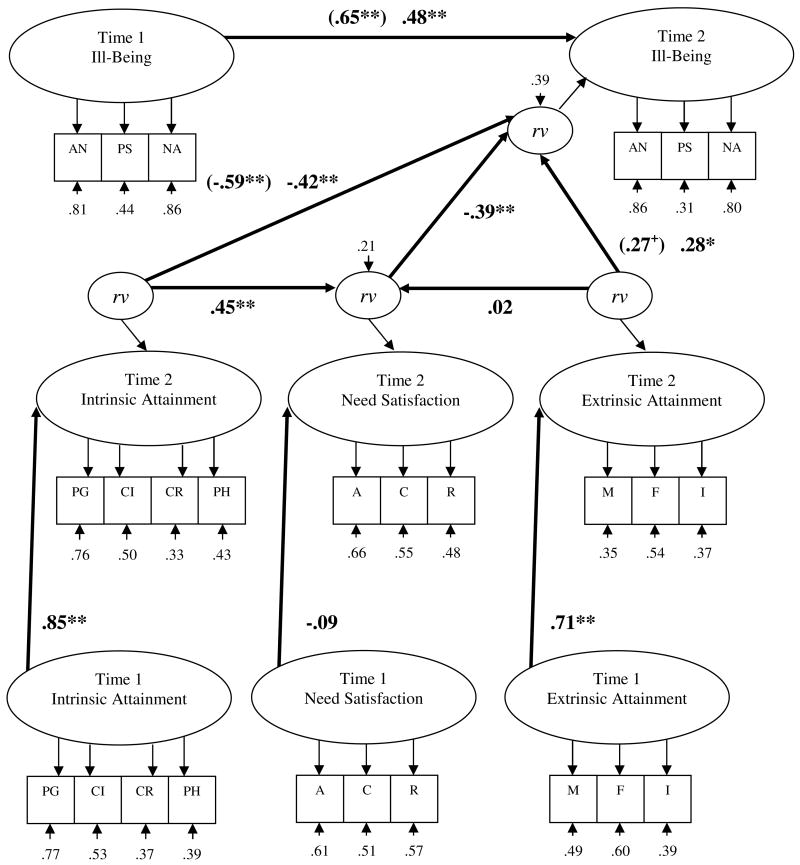Figure 4.
The autoregressive structural equation model, with parameter estimates, examining the structural relations among change in aspiration attainment and ill-being, as mediated by change in basic psychological need satisfaction.
Notes. Latent variables were used to represent all constructs, and the path coefficients are standardized estimates. Each squared multiple correlation (R2) value represents the proportion of variance in an endogenous variable that is explained by the predictors of that particular endogenous variable. The residual variances (labeled rv) of the Time 2 latent constructs represent change in those constructs from Time 1 to Time 2. As depicted by the reduced beta coefficient, the relation of change in intrinsic attainment to change in ill-being was mediated by change in need satisfaction. Moreover, the relation of Time 1 ill-being to Time 2 ill-being was reduced by inclusion of the motivation variables. The covariances (specified in the text) between the residual variances of the observed variables and of the latent constructs were omitted from the figure for clarity. PG = Personal Growth, CI = Community Involvement, CR = Close Relationships, PH = Physical Health, M = Money, F = Fame, I = Image, A = Autonomy, C = Competence, R = Relatedness, AN = Anxiety, PS = Physical Symptoms, NA = Negative Affect. +p < .10, *p < .05, **p < .01.

